LCL Knee Injury & Football
January 20 2008 | Articles
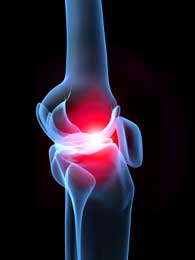
CL or Lateral Collateral Ligament Injury is an injury to the ligament located outside the knee. LCL ligament links the thigh bone and the shin bone. The kind of injury caused by the damage to this ligament is also known as a sprain and occurs if the knee is twisted or forced during a game.
LCL is classified depending on the severity of the damage to the ligament:
• A 1st degree sprain means damage to several ligament fibres.
• A 2nd degree sprain means damage to a larger group of ligament fibres but the ligament is still intact.
• A 3rd degree sprain means a ruptured ligament.
LCL Injury is common amongst footballers when the opponent applies force to the inner part of the legs just below the knee during a tackle.
The force applied to the inside part of the knee joint may rupture the ligament. Severe cases follow when the Anterior Cruciate Ligament and the Posterior Cruciate Ligament are ruptured.
How Do We Know it’s LCL Knee Ligament Injury?
In 1st degree sprains, pain is felt when the knee is damaged and is sore when touched and when the knee is bent. It is aggravated by standing up from a sitting position.
In 2nd degree sprains, the pain is more intensified but swelling of the knees may not be present due to the location of the ligament.
In 3rd degree sprains, the ligament is totally ruptured and the pain is excruciating and the knee joint becomes unstable.
How Do We Treat LCL Knee Ligament Injury?
PRICE or protection, rest, ice, compression and elevation are the emergent care for sprain. However, ice should not be applied directly to the skin as it may cause ice burns. Pain killing medications prescribed by the doctor may be necessary to take. Elevation of the site is essential and a cohesive bandage may be used to compress the site and prevent further swelling. Knee braces could also be a lot of assistance in protecting the knee.
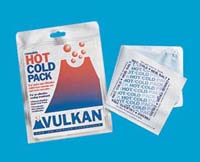
View Reusable ice pack
In 1st degree sprains, sport activities should be stopped for 3 weeks.
A 2nd degree sprain takes 6-8 weeks of rehabilitation under the supervision of a physiotherapist. A buoyancy aid is an effective thing to do to maintain fitness while recovering from the sprain.
The treatment of choice for 3rd degree sprain is surgery. The reconstructive surgery depends on the position of the ligament and the surgeon’s preference
Running in a swimming pool, using a buoyancy aid, is an ideal method of maintaining fitness while the ligament is healing.
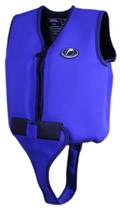
Click here to view buoyancy jackets for water therapy
.
How Do We Prevent LCL Knee Ligament Injury?
A previous knee injury predisposes the knee for LCL knee ligament injury. However, there are measures to prevent the occurrence of the injury. A knee brace provides knee stability and reassures the knee in activities that needs a lot of foot work.
A rehabilitation programme with a trained physiotherapist will also help. The treatment regime must include a lot of proprioception (balance) exercises since this kind of activity is greatly affected by the damage to the ligament. An excellent tool for continuing this kind of exercise is a wobble board, which is mostly done at Football Injury Home in continuation of the treatment regimen with a trained physiotherapist.
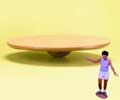
Click here to View a Recommended Wobble Board
Football Rescue Recommends Knee Supports
![]()
![]()
![]()
![]()
![]() 5 Star Rating
5 Star Rating
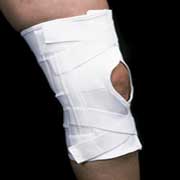
Excellent medial and lateral support ideal for footballers. This wraparound design knee brace is suitable for cases of knee instability due to knee ligament injuries.
How does it work?
This high quality knee brace is lightweight and comfortable, with lock-stitch taped seams and fully trimmed edges for durability. The flexible spiral stays and dual criss-cross elastic straps create firm medial and lateral knee support which reproduces the effect of taping to support the medial collateral ligament (MCL) and lateral collateral ligament (LCL) of the knee.
The upper and lower Velcro fasteners act as ‘anchors’ and knee stabilisers to maintain maximum support. This provides support without compromising mobility and may be more suitable for those engaged in activities that would be overly compromised by a hinged support.
When can I use it?
*Extremely effective in relieving knee pain by taking the stress off knee ligaments that may be injured.
*Perfect for injuries to the Medial Collateral Ligament (MCL) or Lateral Collateral Ligament (LCL).
*Also provides knee pain relief and knee support following a Cartilage injury or when there is mild Arthritis in the knee.
*Ideal knee brace when you require good knee support but need to maintain full movement.
Excellent medial and lateral support ideal for footballers. Multi-tiered, plush-lined elastic body with wraparound design.
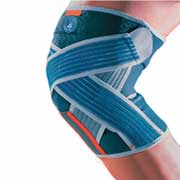
The Knee sport strap is designed to simulate knee joint strapping techniques used to support the collateral knee ligaments and restrict joint rotation but still enable running
